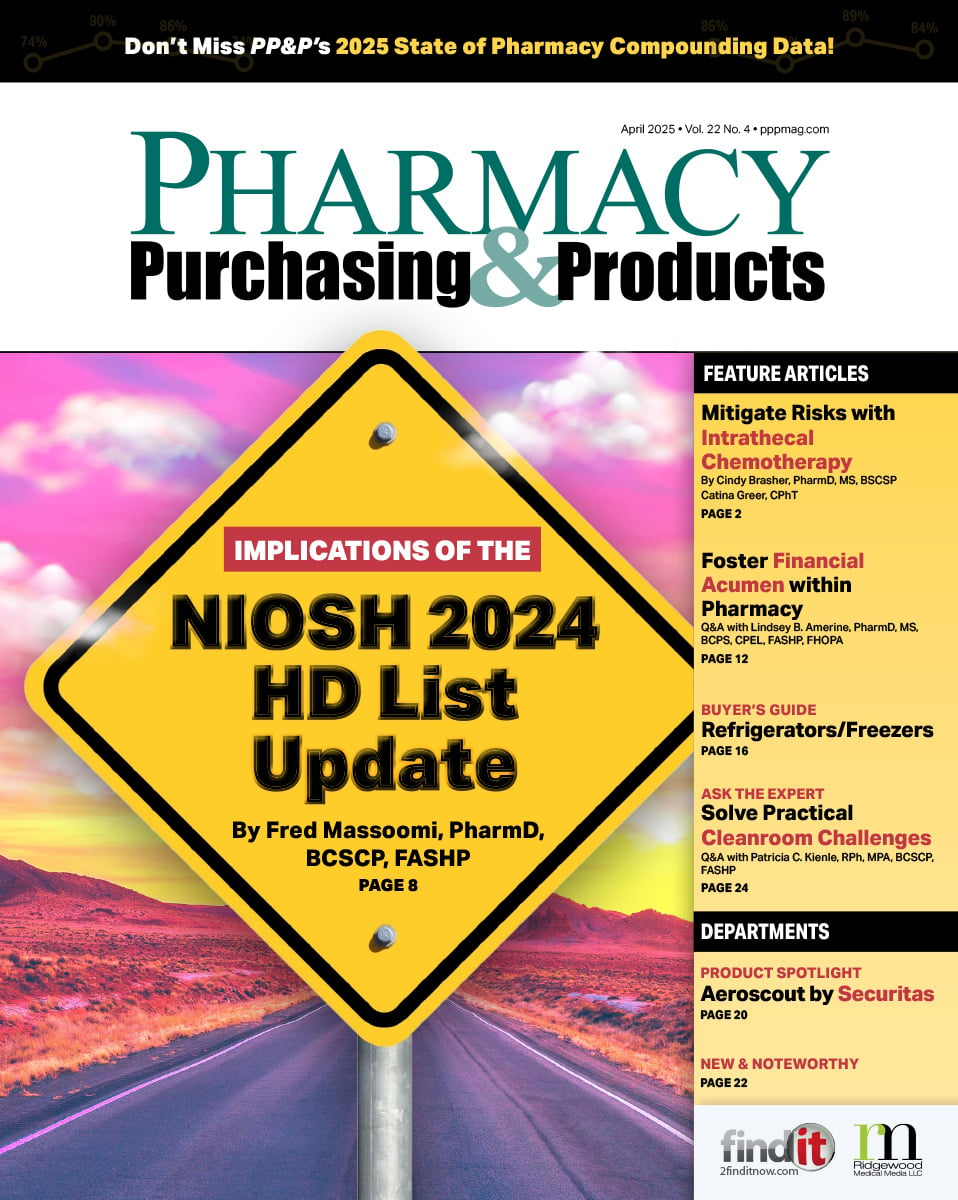- Show Menu
- Contact Us
- FAQs
- Reader Service
- Survey Data
- Survey Winners
- Testimonials
- Upcoming Events
- Webinars
- White Papers
How Can You Accommodate Pregnant Employees in an HD Environment?
Accommodating pregnant or breastfeeding employees, or employees attempting to conceive, can be a daunting task for a pharmacy that performs a high volume of hazardous drug (HD) compounding. The key to handling these staffing challenges is establishing clear policies and procedures with a proper focus on safety and ensuring that employees are cross-trained, competent, and educated in all pharmacy duties.
At Cancer Treatment Centers of America (CTCA)—a cancer center comprising five acute care facilities with a central medication distribution model and just over 100 beds—we compound approximately 1500 doses per day. This high volume of compounding mandates that long- and short-term staffing issues be anticipated and addressed as early as the initial hiring process. It is important to be candid with potential employees during the interview process so that they understand the technician job entails handling HDs and will include training on identifying hazardous agents, safe handling practices, and spill management, in addition to other duties.
Thorough staff training and education is essential to ensuring that pharmacy personnel are prepared for any situation. At CTCA, all new hires participate in an orientation and onboarding process. New technicians do not begin compounding until they finish their training, complete their competencies, and demonstrate comfort with the compounding process; the goal is to avoid on-the-job training. The onboarding process begins with an examination of compounding volumes, peak days, trends, and infusion schedules to determine the best days for training so proper time and attention can be given to the employee. Once training is complete and competencies are established, new employees generally begin compounding non-hazardous medications on low-volume days so they can ease into their compounding responsibilities and become familiar with policies and procedures before moving on to HD compounding. New employees also receive thorough training in the usage of closed system drug-transfer devices (CSTDs).
Technicians should be cross-trained as a matter of good practice; we believe this is necessary regardless of the reason for employee absences or job restrictions. The key to effective cross training is maintaining competencies. Thus, a strong annual competency-testing program is essential. It is also important to shift staff duties whenever possible to ensure all technicians are familiar with the various responsibilities within the pharmacy. Implementing a rotating schedule of duties can achieve this and also help eliminate staff burnout. A secondary option is to rotate vacation or leave coverage to avoid having the same employee cover shift gaps. Although all employees need not be as proficient as those who perform certain tasks as part of their daily responsibilities, every staff member should be competent to execute each pharmacy duty safely and effectively.
It is our policy to remove pregnant or breastfeeding employees or those attempting to conceive from any situation that risks exposure to HDs. As such, these staff members are precluded from hazardous compounding, as well as any handling of HDs, including receiving or delivering HDs to the floor. Instead, these employees are reassigned to other general pharmacy functions, such as non-hazardous compounding (eg, antibiotics and TPNs when not prohibited by drug allergies or other restrictions), order entry, unit-dose repackaging, cart fills, and automated dispensing cabinet management. They may also assist in the training of new employees or be assigned a special project.
When an employee is unable to compound, staff scheduling can be a major concern, as productivity must be sustained. Mandating overtime, outsourcing, or utilizing temp agencies are possible solutions; however, given the expense of these approaches, they may be best reserved for long-term absences. Oftentimes, creative scheduling is the best solution. For short-term absences and vacations, look to adjust the schedules of per diem or part-time employees. With intermittent absences, shift changes (eg, moving to four 10-hour days or altering shift start and end times), providing guaranteed overtime, or offering flex time may be the best solution. Whether it is a simple one-for-one employee schedule switch, switching job functions for a period of time, moving non-scheduled functions to off-hours, or extending hours and providing overtime, we make sure that all employee roles in the pharmacy are filled so patient care is never compromised.
To properly accommodate employees with restrictions, pharmacies must be diligent about cross-training staff and be prepared to rearrange schedules as necessary to ensure all pharmacy duties are covered. Technicians must be provided with the training and tools necessary to be successful at managing any task within the pharmacy. Pharmacists, as well as other support staff, must be prepared to step in and support the operation whenever necessary. The staffing challenges this situation presents in no way should have an impact on the quality of patient care delivered and, therefore, may require a combination of all the solutions addressed herein.
 Joseph W. Coyne, RPh, has served as the vice president of pharmacy services at Cancer Treatment Centers of America since 2009. Joe obtained his BS in pharmacy from the Philadelphia College of Pharmacy and Science, where he is currently an adjunct senior clinical professor with the department of pharmacy practice.
Joseph W. Coyne, RPh, has served as the vice president of pharmacy services at Cancer Treatment Centers of America since 2009. Joe obtained his BS in pharmacy from the Philadelphia College of Pharmacy and Science, where he is currently an adjunct senior clinical professor with the department of pharmacy practice.
Like what you've read? Please log in or create a free account to enjoy more of what www.pppmag.com has to offer.








